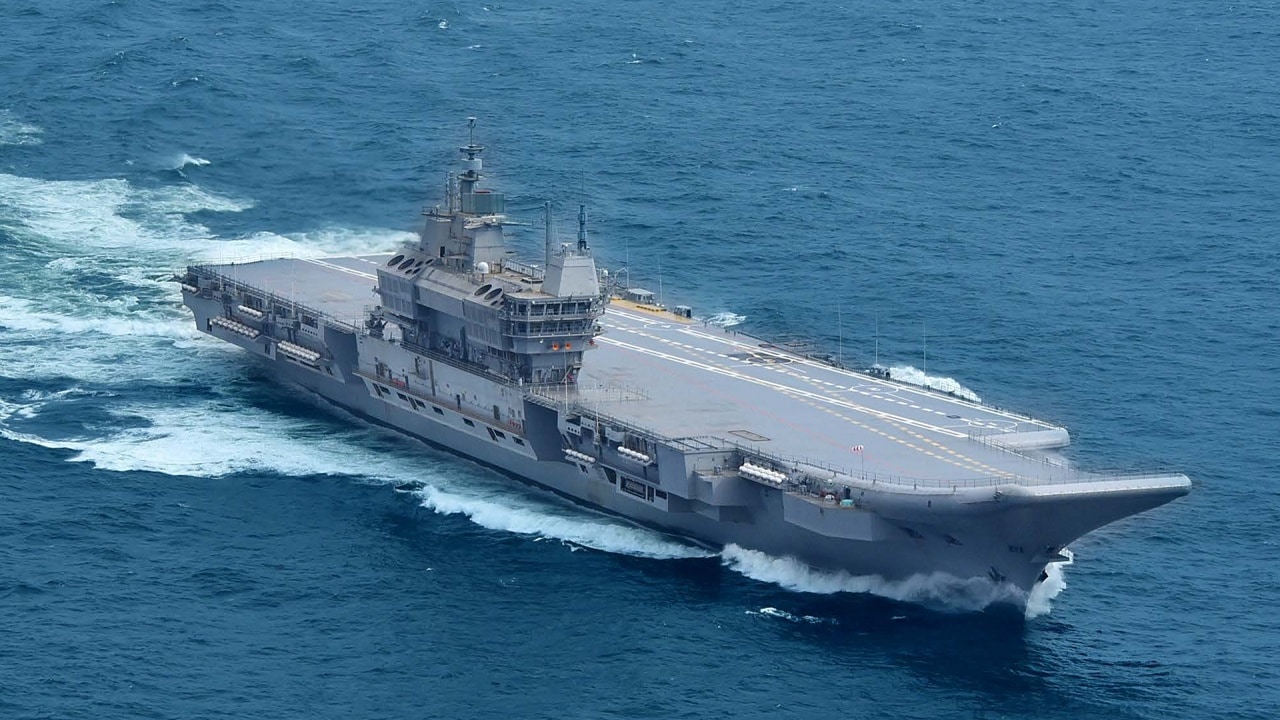Vikrant Is Ready for Action – The Indian Navy will soon receive its first domestically-built aircraft carrier. It was announced last week that the Cochin Shipyard Limited (CSL) is putting the final touches on the carrier, and it will then begin its final sea trial before being officially handed over.
“The final sea trial was scheduled for this month but faced a slight delay. We will hand over the IAC to Indian Navy next month after which the ship will take the name of INS Vikrant. India’s first aircraft carrier will be commissioned on Independence Day in August this year,” DSL director Bejoy Bhasker told reporters at an April 28 press conference to mark the shipyard’s fiftieth anniversary.
The 40,000-tonne (45,000 tons) warship, the largest and most complex to be built in India, will officially join the Indian Navy in August.
The carrier will operate MiG-29K fighter jets, Kamov-31 helicopters, and MH-60R multi-role helicopters. INS Vikrant will have a top speed of around 28 knots and a cruising speed of 18 knots with an endurance of about 7,500 nautical miles. Also notable is that she was designed with more than 2,300 compartments for the crew of around 1,700 sailors – including specialized cabins for female officers.
Made in India
INS Vikrant has been seen as a symbol of pride for New Delhi, and the warship, which was built at a cost of around ₹23,000 crores (approximately USD 3 billion), highlighted the shipbuilding capabilities of India. The South Asian nation is now in a select group of countries that has not only the capabilities of operating an aircraft carrier but more importantly that it can build a state-of-the-art warship.
India has operated carriers in the past, including former Royal Navy warships, while the Indian Navy’s current flagship carrier, INS Vikramaditya, is a former Soviet-built Kiev-class carrier. She entered into service with the Indian Navy in 2013.
An indigenously-built carrier has been seen as a significant leap forward in the capabilities of India, even if progress on the ship has at times seemed slow-moving. The design of the carrier, which was built by the CSL, began in 1999, but her keel wasn’t laid until February 2009. She was subsequently floated out of her dry dock in December 2011 and launched in August 2013. This first indigenous aircraft carrier (IAC) is reported to be sixty percent indigenously made, while the remaining forty percent of its components were imported.
Now that the Vikrant has been completed, CSL officials have said that a new aircraft carrier of IAC specifications could be built by the shipyard in just five years – and require fewer imported components.
“We have gained experience in the IAC project. If the Indian Navy asks us to bring out another aircraft carrier of 45,000-ton category like INS Vikrant, we can do it in five years,” Bejoy continued. “IAC uses ski-jump technology for launching the aircraft from the carrier. We can also make aircraft carriers that use the Electromagnetic aircraft launch system (EMALS) adopted in aircraft carriers of the U.S. Navy. Similarly, we are expanding the capacity of our dry dock here and we can make an aircraft carrier of up to 70,000 tonnes now. We can also manufacture Jack-up rigs and LNG vessels here.”
CSL has already obtained a contract for eight anti-submarine warfare (ASW) shallow watercrafts. At the same time, the facility was declared the lowest bidder for the Indian Navy’s New Generation Missile Vessel (NGMV) project.
Now a Senior Editor for 1945, Peter Suciu is a Michigan-based writer who has contributed to more than four dozen magazines, newspapers and websites. He regularly writes about military hardware, and is the author of several books on military headgear including A Gallery of Military Headdress, which is available on Amazon.com. Peter is also a Contributing Writer for Forbes.

